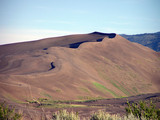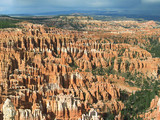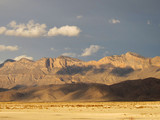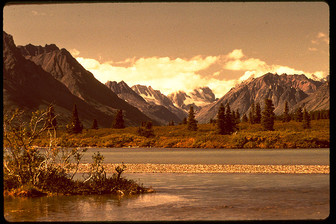Government Grants
Business Grants
Home Owner Programs
Federal Programs
About Us
Conduct Geophysical Sub-surface Resource Survey at Alaskaâ¿¿s National Parks
A priority of National Park Service Cultural Resource division is to identify and preserve cultural resources.
Many of these include buried archaeological sites of which we have very little information about what is contained therein and how extensive the deposits are.
Geophysical Sub-surface
surveys employ Ground Penetrating Radar (GPR) technology to detect cultural material buried beneath the surface, without having to dig holes, which further disturb the resources, to collect this data.
Furthermore, GPR surveys have recently been used to locate human burials, which has been immensely important for park managers and planner that have ground disturbing projects in the works.
Because of the effectiveness of the technology and methodology for identifying buried archaeological deposits and features many parks are looking to employ this technology in their parks to build a greater understanding of where archaeological resources are that we want to avoid and also in some cases to study.
To make this research affordable and to maximize the cost-effectiveness of the fieldwork these parks have agreed to coordinate their efforts to bring a specialist in to conduct the GPR surveys.
Each park has their own unique needs.
Lake Clark National Park seek to identify burials and archaeological deposits in an area with high visitor use.
Cape Krusenstern National Monument is conducting a study of permafrost to explore how climate change and permafrost thawing are affecting cultural deposits in northwest Alaska.
Bering Land Bridge National Preserve is also studying permafrost change but are also proposing to conduct a detailed study of house features and midden areas at Cape Espenberg, in conjunction with controlled excavations already taking place at this location.
Denali plans to travel to Birch Creek to relocate a cemetery and identify grave plots.
Finally, Sitka National Historic Park plans to use GPR to help identify the walls of the Tlingit fort where the Kiks.ádi battled the Russians in 180 4. Objectives Cornell and the NPS will collaborate to accomplish the following objectives:
1. Use multiple geophysical techniques to locate and identify embedded cultural features and sediment layers at all depths for the full depositional range of the sites in each of the parks listed; 2. Produce a detailed report including maps, images and interpretations of the results for use by park management and researchers; 3. Produce both interpretive material of interest to Alaska National Park visitors and scientific research material of interest to an academic audience.
Public Purpose The public will benefit from this project with research that contributes to public understanding of human adaptive responses to the past environments in Alaskaâ¿¿s National Parks.
Results will be documented in a technical report and peer-reviewed scientific journal article developed in collaboration with Cornell research staff and NPS archaeologists.
Dissemination of results will also include a presentation at a professional conference, a public talk, and serve as the basis for public outreach and interpretive materials at NPS.
The PI of this project will detail each of these studies as particular case-studies in a book length monograph on geophysical sub-surface survey methodologies.
This project also provides NPS participants with instruction and practical experience in geophysical techniques applied to cultural resources management in a public land management context.
The Alaska Region has several established methods for sharing research results, including High Latitude Highlights, Alaska Park Science, and special scientific publications.
The results, if not sensitive in nature and protected by the Archeological Resource Protection Act or similar legislation, can also be posted the NPS Integrated Resource Management Application (IRMA) for public access.
Many of these include buried archaeological sites of which we have very little information about what is contained therein and how extensive the deposits are.
Geophysical Sub-surface
surveys employ Ground Penetrating Radar (GPR) technology to detect cultural material buried beneath the surface, without having to dig holes, which further disturb the resources, to collect this data.
Furthermore, GPR surveys have recently been used to locate human burials, which has been immensely important for park managers and planner that have ground disturbing projects in the works.
Because of the effectiveness of the technology and methodology for identifying buried archaeological deposits and features many parks are looking to employ this technology in their parks to build a greater understanding of where archaeological resources are that we want to avoid and also in some cases to study.
To make this research affordable and to maximize the cost-effectiveness of the fieldwork these parks have agreed to coordinate their efforts to bring a specialist in to conduct the GPR surveys.
Each park has their own unique needs.
Lake Clark National Park seek to identify burials and archaeological deposits in an area with high visitor use.
Cape Krusenstern National Monument is conducting a study of permafrost to explore how climate change and permafrost thawing are affecting cultural deposits in northwest Alaska.
Bering Land Bridge National Preserve is also studying permafrost change but are also proposing to conduct a detailed study of house features and midden areas at Cape Espenberg, in conjunction with controlled excavations already taking place at this location.
Denali plans to travel to Birch Creek to relocate a cemetery and identify grave plots.
Finally, Sitka National Historic Park plans to use GPR to help identify the walls of the Tlingit fort where the Kiks.ádi battled the Russians in 180 4. Objectives Cornell and the NPS will collaborate to accomplish the following objectives:
1. Use multiple geophysical techniques to locate and identify embedded cultural features and sediment layers at all depths for the full depositional range of the sites in each of the parks listed; 2. Produce a detailed report including maps, images and interpretations of the results for use by park management and researchers; 3. Produce both interpretive material of interest to Alaska National Park visitors and scientific research material of interest to an academic audience.
Public Purpose The public will benefit from this project with research that contributes to public understanding of human adaptive responses to the past environments in Alaskaâ¿¿s National Parks.
Results will be documented in a technical report and peer-reviewed scientific journal article developed in collaboration with Cornell research staff and NPS archaeologists.
Dissemination of results will also include a presentation at a professional conference, a public talk, and serve as the basis for public outreach and interpretive materials at NPS.
The PI of this project will detail each of these studies as particular case-studies in a book length monograph on geophysical sub-surface survey methodologies.
This project also provides NPS participants with instruction and practical experience in geophysical techniques applied to cultural resources management in a public land management context.
The Alaska Region has several established methods for sharing research results, including High Latitude Highlights, Alaska Park Science, and special scientific publications.
The results, if not sensitive in nature and protected by the Archeological Resource Protection Act or similar legislation, can also be posted the NPS Integrated Resource Management Application (IRMA) for public access.
Related Programs
Cooperative Research and Training Programs Resources of the National Park System
Department of the InteriorWho's Eligible
Obtain Full Opportunity Text:
Program Guidance
Additional Information of Eligibility:
Not Available
Full Opportunity Web Address:
https://www.fema.gov/community-assistance-program-state-support-services-element
Contact:
Julie GrauerEmail: julie.grauer@fema.dhs.govPhone: 202-212-3460
Agency Email Description:
julie.grauer@fema.dhs.gov
Agency Email:
julie.grauer@fema.dhs.gov
Date Posted:
2017-05-31
Application Due Date:
2017-06-06
Archive Date:
2017-06-09
Social Entrepreneurship
Spotlight
Why People Buy from Social Enterprises?

The Guardian has compiled a list of responses to its latest open thread, and has announced the winner of the social enterprise gift hamper packed with presents.





